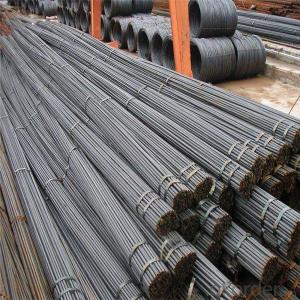GB HRB400 HRB500 BS4449 ASTM A615 GR40 GR60 steel rebar
- Loading Port:
- China main port
- Payment Terms:
- TT OR LC
- Min Order Qty:
- 1000 m.t.
- Supply Capability:
- 19863 m.t./month
OKorder Service Pledge
OKorder Financial Service
You Might Also Like
Item specifice
Rebar called reinforcing bars, steel rebar is metal bars often used in construction for pouring concrete or
supporting walls and columns. The rebar can be smooth, though they are frequently manufactured with
deformations that create greater texture to which concrete can adhere, creating a stronger bond that helps
prevent cracking of concrete. These deformations do not create weaknesses in the rebar, and when rebar
is measured to determine its diameter, it is typically measured at the narrowest point. Strength grades
indicate the amount of pressure the steel rebar can withstand, and grade and diameter are typically presented
in both imperial and metric units
Our Advantage:
High quality steel products from 1 class mills in China
Reasonable price
Professionalism of the products
On-time delivery
Complete documents and certificates
Sincere service to meet our clients' requirements
Product Description :
Chemical composition (%): | Steel | C | Si | Mn | P | S | Ceq | ||||
HRB335 |
0.25 |
0.80 |
1.60 |
0.045 |
0.045 | 0.52 | |||||
HRB400 | 0.54 | ||||||||||
HRB500 | 0.55 | ||||||||||
Mechanical properties | Steel | Rel/ MPa | Rm/ MPa | A/ % | Agt/ % | ||||||
≥ | |||||||||||
HRB335 | 335 | 455 | 17 |
7.5 | |||||||
HRB400 | 400 | 540 | 16 | ||||||||
HRB500 | 500 | 630 | 15 | ||||||||
Package: | Standard export packing or as customer's request | ||||||||||
Application: | Construction, building, bridge, road. ect | ||||||||||
Payment terms | 1).100% irrevocable L/C at sight. | ||||||||||
Delivery time | 15-30 days after receipt of L/C or deposit by T/T | ||||||||||
Features
1、Pure steel quality, stable chemical contents, small tolerance.
2、Constant Quality, good drawing performance.
3、High dimension accuracy degree, accuracy degree of Level C up to 80%, smooth surface, less scale, easy to be pickled.
4、Automatic bundling with 4 lines by Machine in tidy and good looks
5、Big high quality percentage, small coil percentage, and heavy coil weight for Hard Coil.
6、High sorbitizing percentage.
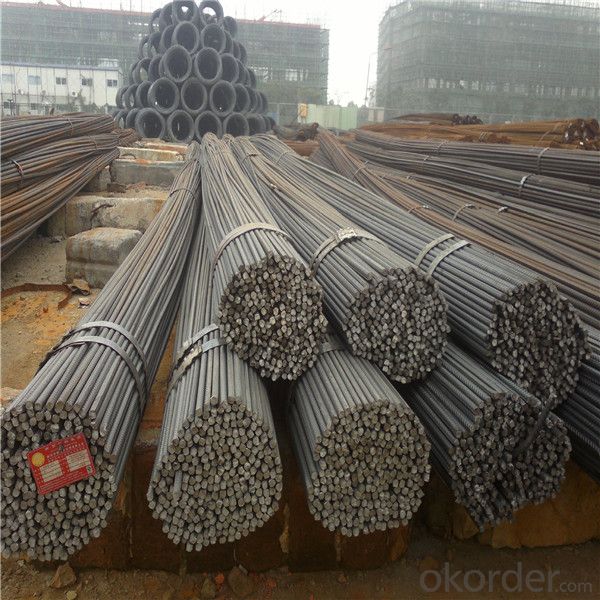
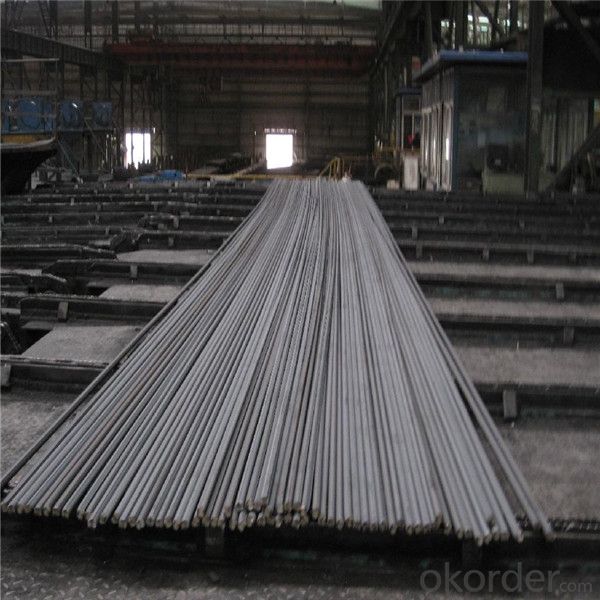
Packing:
In bundles, each bundle weight 3.5 tons. Load by container or by bulk verssel.
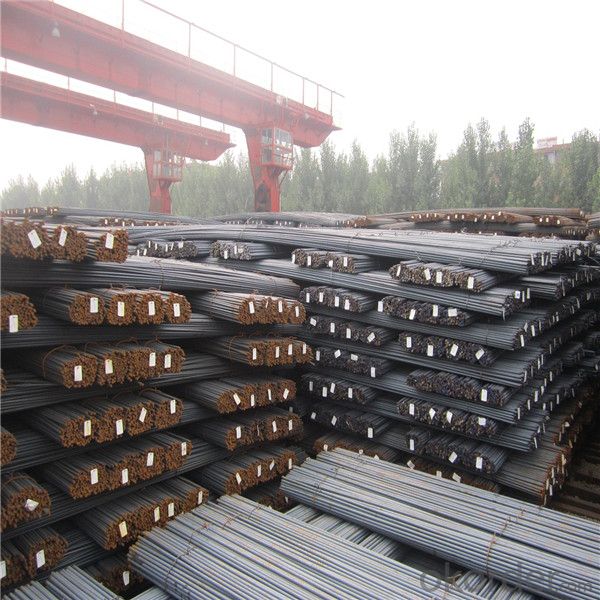
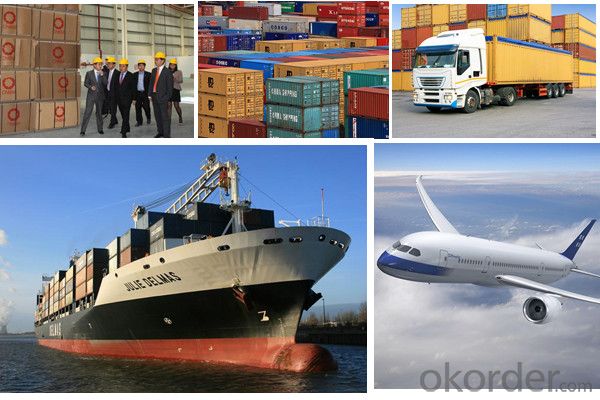
Our service
(1) We cooperate with famous factories with advanced equipment and well trained workers.
(2) We can provide factory price with trading company service.
(3) We continuously work on the improvement of our processes, guaranteeing consistently high standards
of quality to keep none compensation.
(4) We guarantee 24 hours response and 48 hours solution providing service.
(5) We accept small order quantity before formal cooperation.
(6) We deliver the agreed quality at the agreed time, reacting to changes in customer wishes in a flexible way.
(7) Due to our volume and selling power, we have excellent freight rates with shipping lines.
(8) We strive to always be fair and honest in our dealings with customers.
(9) We strive to work together with customers to achieve much more than we can achieve alone.
(10) Through our passion and commitment we aim to be a market leader in all our key markets. To maintain
our position as market leader we must continue to add value in all that we do.
FAQ:
1.Q: What's your MOQ(minimum order quantity)?
A: One full container, mixed acceptable .
2. Q: What's your packing methods?
A: Packed in bundle or bulk ..
3. Q: How can I buy CNBM products in my country?
A:Please send us an inquiry or email ,we will reply to you if there is distributor in your country
4. Q: Can we visit your factory?
A: Warmly welcome. Once we have your schedule, we will arrange the professional sales team to follow up your case.
5. Q: How long does it take to get the product if i place an order?
A:With the process of your requirements,we will pack and deliver in 3-7 days. If it is by sea shipment,it will take 15-45 days depending on different locations
- Q:How are steel rebars coated with epoxy?
- Steel rebars are coated with epoxy through a process called epoxy coating or epoxy rebar coating. This process involves applying a layer of epoxy onto the surface of the steel rebar to provide protection against corrosion and other environmental factors. The first step in coating steel rebars with epoxy is to prepare the surface. This includes cleaning the rebars to remove any dirt, oil, or rust that may be present. Surface preparation is crucial as it ensures proper adhesion of the epoxy to the steel surface. Once the surface is prepared, the epoxy coating is applied. There are various methods for applying epoxy, including spraying, brushing, or dipping the rebars into an epoxy solution. The chosen method depends on factors such as the size and shape of the rebars, as well as the desired thickness of the epoxy coating. After the epoxy is applied, the rebars are left to cure. Curing is a process that involves allowing the epoxy to harden and reach its maximum strength. The curing time can vary depending on the specific epoxy product used, but it usually takes several hours or even days for the epoxy to fully cure. Once the epoxy coating is fully cured, the coated rebars are ready for use. The epoxy coating provides a protective barrier that helps prevent the steel rebars from rusting and deteriorating over time. It also improves the rebars' resistance to chemicals, moisture, and other corrosive substances. Overall, epoxy coating is an effective method for protecting steel rebars from corrosion and extending their lifespan. It is widely used in construction projects where rebars are exposed to harsh environmental conditions, such as bridges, buildings, and infrastructure projects.
- Q:How do steel rebars resist alkali-silica reaction in concrete?
- Steel rebars resist alkali-silica reaction in concrete primarily due to their passive film and the alkaline environment of the concrete. When steel rebars are embedded in concrete, they form a passive film on their surface. This film acts as a protective layer that prevents direct contact between the steel and the aggressive alkali-silica reactive aggregates present in the concrete. This passive film is formed due to the high pH of the alkaline environment created by the cement in the concrete, which typically ranges between pH 12-13. This high pH helps in creating a protective oxide layer on the surface of the steel rebar, preventing it from coming into contact with the reactive elements in the aggregates. Furthermore, the alkaline environment of the concrete helps in maintaining the passivity of the steel rebars. The alkalinity of the concrete allows the passive film to remain stable and intact, providing a continuous barrier against the alkali-silica reaction. As long as the pH of the concrete remains high, the steel rebars will continue to resist the reaction. It is worth noting that the thickness and quality of the passive film on the steel rebars are crucial in ensuring their resistance to alkali-silica reaction. Any factors that can compromise the integrity of this film, such as carbonation or chloride contamination, may increase the risk of the reaction occurring. In summary, steel rebars resist alkali-silica reaction in concrete due to the presence of a passive film on their surface, which is formed by the alkaline environment of the concrete. This film acts as a protective barrier, preventing the steel from coming into direct contact with the reactive aggregates and thus, mitigating the likelihood of the reaction occurring.
- Q:Are there any specific guidelines for storing and handling steel rebars?
- Yes, there are specific guidelines for storing and handling steel rebars. Here are some important points to consider: 1. Storage: Steel rebars should be stored in a clean, dry, and well-ventilated area to prevent corrosion. They should be stacked on timber or other suitable materials to keep them off the ground and avoid contact with moisture. 2. Handling: Steel rebars should be handled with care to prevent any damage or bending. It is recommended to use appropriate equipment such as cranes, forklifts, or strong hooks to lift and move rebars. Avoid dragging or dropping them, as it can result in deformations and weaken their structural integrity. 3. Bundling: Rebars should be properly bundled and tied together using steel wires or straps to prevent them from rolling or shifting during storage or transportation. This ensures their stability and reduces the risk of accidents. 4. Separation: Different sizes and types of rebars should be separated and clearly labeled to avoid confusion during construction. This helps in easily identifying and using the required rebar as per the structural plans. 5. Protection: Rebars should be protected from exposure to moisture, rain, snow, and other weather elements. If rebars are stored outdoors, waterproof covers or tarps should be used to shield them and prevent rust formation. 6. Inspection: Regular inspections should be conducted to identify any signs of corrosion, damage, or bending. Any defective or compromised rebars should be removed and replaced to ensure the structural integrity of the construction project. 7. Transportation: During transportation, rebars should be securely fastened and loaded onto suitable vehicles to prevent movement or falling off. Adequate padding and tie-downs should be used to protect rebars from damage and ensure safe transportation. It is crucial to follow these guidelines to maintain the quality, durability, and safety of steel rebars throughout their storage and handling process.
- Q:Can the thread steel of the steel platform of the fixed unloading platform not work?
- The cantilever beam end should set the wire rope or steel rod with a layer of building structure of cable-stayed suspension type steel each node. The rings of wire rope and building structure Rachel should use HPB300 grade steel, its diameter should not be less than 22mm, the rings embedded anchor reinforcement anchorage length should be specified in accordance with current national standard "code for design of concrete structures" in GB50010.
- Q:How do steel rebars affect the workability of concrete?
- Steel rebars can significantly affect the workability of concrete by enhancing its tensile strength and overall structural integrity. The presence of rebars allows for the construction of larger and more durable concrete structures. However, the presence of rebars can also make the concrete mixture stiffer and more difficult to handle during the pouring and placing process. This decreased workability requires additional effort and may necessitate the use of additives or adjusting the concrete mixture proportions to maintain the desired level of workability.
- Q:Are there any alternatives to steel rebars?
- Yes, there are several alternatives to steel rebars. One alternative is the use of fiber-reinforced polymer (FRP) rebars, which are made of high-strength fibers embedded in a polymer matrix. FRP rebars offer several advantages over traditional steel rebars, including corrosion resistance, high tensile strength, and lightweight properties. They are also non-magnetic and electrically non-conductive, making them suitable for areas with electromagnetic interference concerns. Another alternative is the use of basalt rebars, which are made from basalt rock fibers. Basalt rebars offer similar benefits as FRP rebars, including corrosion resistance and high tensile strength. Additionally, some manufacturers have developed alternative materials such as bamboo, carbon fiber, and glass fiber rebars, which have also shown promise in certain applications. However, it is important to note that the choice of alternative rebars depends on the specific requirements of a project, and factors such as cost, availability, and local building codes should be considered when selecting an alternative to steel rebars.
- Q:What are the advantages of using deformed steel rebars?
- There are several advantages to using deformed steel rebars in construction projects. Firstly, the deformed shape of the rebars provides enhanced bonding with the surrounding concrete. The ridges, bumps, or indentations on the surface of the rebar increase the surface area in contact with the concrete, resulting in improved adhesion. This ensures a stronger bond between the rebar and the concrete, making the overall structure more resistant to forces such as tension, compression, and shear. Secondly, deformed steel rebars offer better resistance to slippage. The irregular surface of the rebar prevents it from easily slipping or moving within the concrete. This is particularly beneficial in structures subject to seismic activity or heavy loads, as it helps to maintain the integrity and stability of the construction. Additionally, the use of deformed steel rebars enhances the overall structural strength and durability of the project. The deformations on the surface of the rebar allow it to better absorb and distribute stress, making it less susceptible to cracking or failure under high loads. This strength and durability make deformed rebars suitable for a wide range of applications, including bridges, high-rise buildings, and industrial structures. Furthermore, deformed steel rebars provide cost-effectiveness in long-term maintenance. The improved bond between the rebar and concrete reduces the risk of corrosion and deterioration over time. This leads to reduced maintenance and repair costs, as the structure remains more resilient and less prone to structural degradation caused by environmental factors. Lastly, deformed steel rebars offer versatility in design. The various types and sizes of deformed rebars available in the market allow engineers and designers to choose the most appropriate option for their specific project requirements. The flexibility in design ensures that the rebars can be tailored to meet the structural demands of different applications, thus contributing to the overall efficiency and safety of the construction project. In conclusion, the advantages of using deformed steel rebars include enhanced bonding with concrete, resistance to slippage, improved structural strength and durability, cost-effectiveness in maintenance, and versatility in design. These advantages make deformed steel rebars a preferred choice in construction projects where strength, stability, and long-term performance are crucial factors.
- Q:What are the different methods of protecting steel rebars against corrosion?
- There are multiple methods available for safeguarding steel rebars from corrosion, which can be broadly categorized into passive and active protection. Passive protection methods involve using barrier coatings or inhibitors to prevent corrosive agents from reaching the surface of the steel rebars. One commonly used technique is applying epoxy coatings, which create a physical barrier between the rebar and its surrounding environment. These coatings can be administered through spraying, brushing, or immersion, and offer excellent corrosion protection. Another passive protection method is utilizing zinc-based coatings like galvanization or zinc-rich paints. These coatings provide sacrificial protection, where the zinc layer corrodes first, thereby shielding the steel rebar from corrosive elements. Galvanization, a widely adopted technique, involves immersing the rebar in molten zinc to form a protective layer. In addition to barrier coatings, inhibitors can also be employed to protect steel rebars. Inhibitors work by reducing the corrosive activity of the surrounding environment. Common inhibitors include calcium nitrite, which forms a protective layer on the rebar's surface, and organic compounds such as amines and phosphates, which passivate the steel and decrease corrosion rates. Active protection methods involve using impressed current cathodic protection (ICCP) or galvanic anodes. ICCP entails applying a direct electrical current to the steel rebar, counteracting the corrosive forces. This technique necessitates the installation of anodes and a power supply system. On the other hand, galvanic anodes are sacrificial metals like aluminum or magnesium that are connected to the steel rebar. The anode corrodes instead of the rebar, offering protection. It is important to consider various factors, including the environment, exposure conditions, and project requirements, when selecting a protection method. Consulting corrosion experts or engineers is often recommended to determine the most suitable method for safeguarding steel rebars from corrosion in a specific situation.
- Q:How are steel rebars used in the construction of dams?
- Steel rebars are used in the construction of dams to reinforce the concrete structure and provide additional strength and durability. They are typically placed within the concrete to resist tensile forces and prevent cracking or collapsing under the immense pressure of water. The rebars help to distribute the load evenly across the dam, increasing its overall stability and ensuring its long-term structural integrity.
- Q:Is the finish steel 3 grade steel?
- The finish rolling thread steel is not 3 grade steel, and the 3 grade finish rolling thread steel is common thread steel.
1. Manufacturer Overview |
|
|---|---|
| Location | |
| Year Established | |
| Annual Output Value | |
| Main Markets | |
| Company Certifications | |
2. Manufacturer Certificates |
|
|---|---|
| a) Certification Name | |
| Range | |
| Reference | |
| Validity Period | |
3. Manufacturer Capability |
|
|---|---|
| a)Trade Capacity | |
| Nearest Port | |
| Export Percentage | |
| No.of Employees in Trade Department | |
| Language Spoken: | |
| b)Factory Information | |
| Factory Size: | |
| No. of Production Lines | |
| Contract Manufacturing | |
| Product Price Range | |
Send your message to us
GB HRB400 HRB500 BS4449 ASTM A615 GR40 GR60 steel rebar
- Loading Port:
- China main port
- Payment Terms:
- TT OR LC
- Min Order Qty:
- 1000 m.t.
- Supply Capability:
- 19863 m.t./month
OKorder Service Pledge
OKorder Financial Service
Similar products
New products
Hot products
Related keywords
